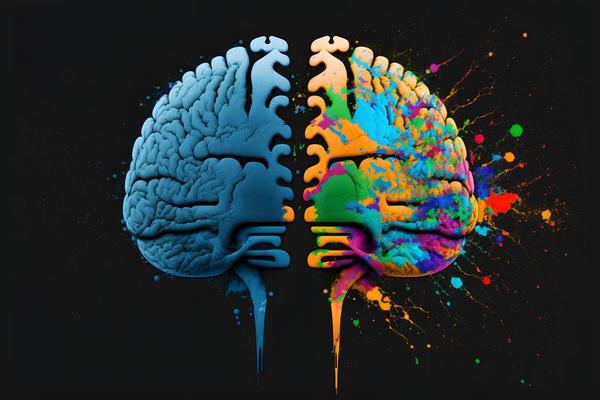Recent scientific discoveries are revolutionizing how we understand, diagnose, and support people with autism. This article explores the most promising breakthroughs shaping the future of autism science and its broader implications for education, healthcare, and society.
For decades, autism spectrum disorder (ASD) has remained one of the most complex and least understood neurodevelopmental conditions. Traditionally framed as a disorder requiring correction or accommodation, autism is now being recontextualized by a growing scientific movement that embraces neurodiversity. Recent breakthroughs in genetics, neuroscience, and technology are not only shedding light on the biological roots of autism but are also challenging outdated models of diagnosis and treatment. This shift marks a new era—one defined less by pathology and more by understanding the brain’s vast diversity.
1. Decoding the Genetic PuzzleOne of the most promising areas of autism research lies in genetics. Scientists have now identified hundreds of genes that may contribute to autism, although no single gene is responsible for the condition. Rather, it’s a complex interplay between multiple genes and environmental factors.
A landmark 2023 study published in Nature Genetics used AI to analyze the genomes of over 150,000 people. The researchers identified 134 high-confidence autism-linked genes and found that many of them influence brain development as early as in the womb. These findings not only advance our understanding of the genetic architecture of autism but also hold promise for earlier and more accurate diagnosis.
2. The Brain’s Unique WiringNeuroscientists have begun mapping how the autistic brain processes information differently. Using cutting-edge imaging techniques like fMRI and diffusion tensor imaging (DTI), researchers are observing structural and functional connectivity differences in the autistic brain.
For instance, studies show that autistic individuals often exhibit heightened connectivity in local brain regions and reduced long-range communication between hemispheres. This may explain the intense focus or “special interests” commonly seen in autistic individuals, as well as their challenges with multitasking or switching attention.
Moreover, this research is shifting focus from the deficits-based model toward a strengths-based approach. Many autistic individuals excel in pattern recognition, memory, and visual processing—traits that are increasingly valuable in fields like cybersecurity, mathematics, and engineering.
3. A Revolution in Diagnosis: From Observation to PrecisionTraditionally, autism has been diagnosed based on behavioral observations and parental reports. However, new technologies are ushering in a more objective era. Researchers are now developing biomarkers—biological indicators that can reliably identify autism in its early stages.
In 2024, a team from Stanford University created a blood test that detects autism-related biomarkers with over 81% accuracy in toddlers. Similarly, wearable sensors and eye-tracking devices are being tested to measure gaze patterns, facial expressions, and movement coordination.
These tools promise earlier intervention, which is crucial because therapies are most effective during the first three years of life. Early diagnosis could help families receive support sooner and tailor interventions more precisely.
4. Digital Therapies and AI CompanionsDigital therapeutics are reshaping the way autism is treated. Apps and AI-powered robots are now being used to teach social skills, manage anxiety, and support communication. Tools like Leka, a robotic companion, and apps like “EndeavorRx” provide gamified behavioral therapies that can be used at home or in schools.
AI-based speech tools also help non-verbal children communicate through predictive text and emotion recognition. These platforms allow for continuous, real-time data collection, which can help therapists adapt treatment strategies dynamically.
5. Challenging the Deficit ModelImportantly, the autism conversation is expanding beyond medical research into cultural and philosophical arenas. The neurodiversity movement—coined in the late 1990s—is now informing science. It views autism not as a condition to be “fixed” but as a natural variation in human cognition.
This has influenced policy and practice, especially in education. Schools are increasingly adopting Universal Design for Learning (UDL) to accommodate various learning styles, including those of autistic students. In the workplace, companies like SAP and Microsoft have launched neurodiverse hiring initiatives, recognizing the unique talents autistic individuals bring to the table.
6. Autism and the Gut-Brain AxisEmerging research is also examining the gut-brain connection in autism. Studies show that many autistic individuals experience gastrointestinal issues, and scientists are beginning to understand how gut microbiota may influence brain development and behavior.
A 2023 study by Caltech researchers demonstrated that altering gut bacteria in mouse models led to changes in social behavior and anxiety levels. Although the findings are preliminary, they suggest potential for microbiome-based treatments in the future.
7. Ethical Challenges and the FutureAs science advances, ethical questions also arise: Who decides what is “normal” brain function? Should we aim to “cure” autism, or simply understand and support it? These questions are particularly poignant as we move toward gene-editing technologies like CRISPR.
Furthermore, representation in research is still an issue. Most studies have focused on white, male participants, often excluding women, non-binary individuals, and people of color, whose autism may manifest differently.
ConclusionThe future of autism science is bright, complex, and deeply human. As technology opens new doors, it is essential that the scientific community walks hand-in-hand with the autism community. The goal is no longer normalization but liberation—creating a world where neurodivergent minds are understood, supported, and celebrated.
Source:
Nature Genetics (2023). “Genome-wide association study of autism spectrum disorder.”
Stanford University Autism Research Center (2024).
Caltech Institute for Brain-Gut Research (2023).
Journal of Neurodevelopmental Disorders.
Interviews and policy papers from the Neurodiversity Foundation.

